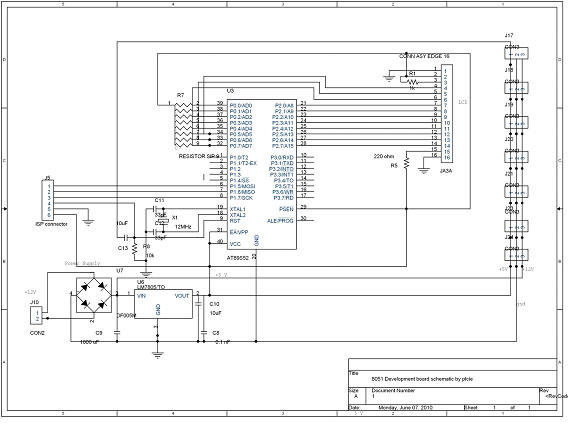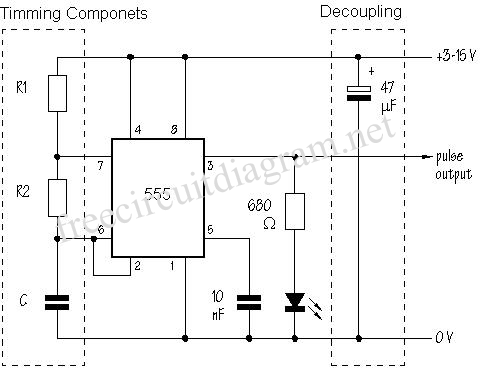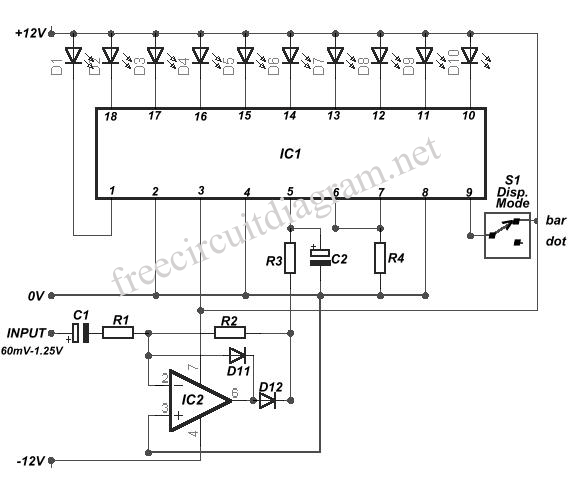
DTMF Based Robo Car Design & Circuit using 8051 Microcontroller

DTMF-based Robo Car design using the 8051 microcontroller project. This project demonstrates a method to control a domestic system using the DTMF tone generated by a telephone instrument when the user presses the keypad buttons of a mobile phone connected to the remote domestic system.
The DTMF (Dual-Tone Multi-Frequency) based Robo Car utilizes an 8051 microcontroller as the core control unit. The system is designed to facilitate remote operation of a robotic car through a mobile phone. When a user presses specific keys on the mobile phone, corresponding DTMF tones are generated and transmitted over the telephone network. These tones are received by the Robo Car's DTMF decoder, which interprets the signals and converts them into control commands for the microcontroller.
The 8051 microcontroller processes these commands to control various functions of the Robo Car, such as movement (forward, backward, left, right) and additional features like activating lights or sensors. The system typically includes a motor driver to interface the microcontroller with the motors of the car, allowing for precise control over the vehicle's movements.
Power supply considerations are crucial for the operation of both the microcontroller and the motors. A regulated power source is generally required to ensure stable operation. Additionally, the design may incorporate feedback mechanisms, such as sensors, to enhance the functionality and responsiveness of the Robo Car.
The overall architecture of the project includes a mobile phone for user input, a DTMF decoder circuit to interpret the signals, the 8051 microcontroller for processing commands, and motor driver circuits to control the motors of the Robo Car. This project not only demonstrates the practical applications of DTMF technology in robotics but also showcases the integration of telecommunications with embedded systems for remote control applications.DTMF Based Robo Car Design using 8051 Microcontroller Project. This project presents a method to control a domestic system using the DTMF tone generated by transmitting telephone instrument when the user pushes the keypad buttons of the mobile phone connected to the remote domestic system 🔗 External reference
The DTMF (Dual-Tone Multi-Frequency) based Robo Car utilizes an 8051 microcontroller as the core control unit. The system is designed to facilitate remote operation of a robotic car through a mobile phone. When a user presses specific keys on the mobile phone, corresponding DTMF tones are generated and transmitted over the telephone network. These tones are received by the Robo Car's DTMF decoder, which interprets the signals and converts them into control commands for the microcontroller.
The 8051 microcontroller processes these commands to control various functions of the Robo Car, such as movement (forward, backward, left, right) and additional features like activating lights or sensors. The system typically includes a motor driver to interface the microcontroller with the motors of the car, allowing for precise control over the vehicle's movements.
Power supply considerations are crucial for the operation of both the microcontroller and the motors. A regulated power source is generally required to ensure stable operation. Additionally, the design may incorporate feedback mechanisms, such as sensors, to enhance the functionality and responsiveness of the Robo Car.
The overall architecture of the project includes a mobile phone for user input, a DTMF decoder circuit to interpret the signals, the 8051 microcontroller for processing commands, and motor driver circuits to control the motors of the Robo Car. This project not only demonstrates the practical applications of DTMF technology in robotics but also showcases the integration of telecommunications with embedded systems for remote control applications.DTMF Based Robo Car Design using 8051 Microcontroller Project. This project presents a method to control a domestic system using the DTMF tone generated by transmitting telephone instrument when the user pushes the keypad buttons of the mobile phone connected to the remote domestic system 🔗 External reference





